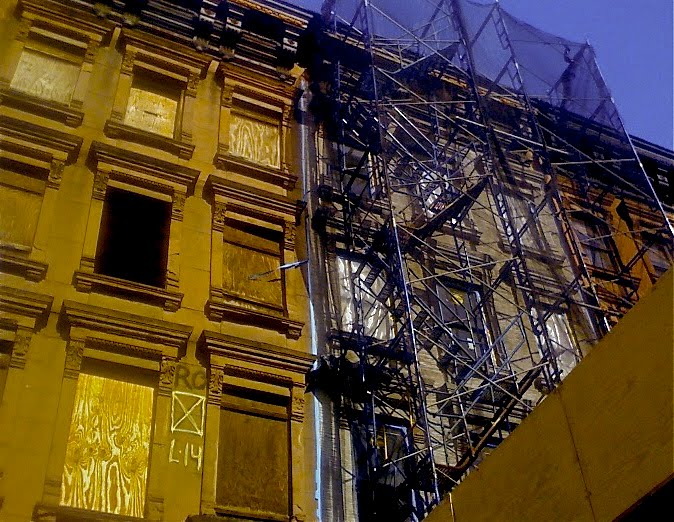We are doing the flashing and installation of the windows for our Passive House brownstone in Manhattan and needed a scaffold. There seems to be a lot of confusion among contractors around what is allowed for scaffold installation.
Here are the official rules for scaffold installation in Manhattan
I asked around to my seasoned contractors and got a lot of different answers. The general opinion is that as long as you keep the scaffold below 40 feet you can do it without any license. I know facade contractors who have been installing scaffolds for years without any OSHA training at all and they have had no issues with the DOB.
Likewise the rental company tells us that they rent the scaffolding all the time to contractors who have no training and who have no problems.
The official rule however is that anyone installing scaffolding below 40 feet needs to take a 32 hour training and have the card on site. And anyone just walking on the scaffold needs to have a 4 hour training. And you can bet your ass that if you have the bad luck of a DOB inspector passing by when the scaffolding is up they are going to stick to the rules.
And god forbid somebody gets hurt.
Once you go over 40 feet everything changes. You need architectural plans of the scaffold and it needs to be approved by the DOB.
For our green renovations most of our contractor work happens on the inside. Because these are brownstones we don’t insulate on the outside. So we don’t need scaffolds that often. The only time we need them is when we get these fancy triple pane windows for Passive House construction that need fantastic air sealing around the frames. Then we have to access them from the outside.

—-
The other kind of scaffold is a hanging scaffold. The DOB rules on this are here and also copied below:
Suspended scaffolds (also called hanging scaffolds) are work platforms that hang from overhead support structures on roofs or building setbacks. Suspended scaffolds must comply with the New York City Construction Codes.
All workers on suspended scaffolds must complete scaffold-specific training. In addition, a designated foreman, licensed sign hanger or licensed rigger must be on site at all times to supervise scaffold operations.
- Types of Suspended Scaffolds
There are three major types of suspended scaffolding:
- Outrigger Beams
- C-Hooks
- Davit Structures
Using Outrigger Beams & C-Hooks
Applicants seeking to use outrigger beams must file a CD-5application with the Cranes and Derricks unit. Notification must be made to the Buildings Department prior to using outrigger beams or c-hooks.
 Learn More
Learn More
Training Requirements and Certifications
- Workers:
- Must complete a 16-hour training course by a Department-approved training provider and receive a Certificate of Completion.
- Must have a Certificate of Fitness, issued by the licensed rigger or licensed sign hangeroverseeing the scaffold operations.
- Erectors:
- Rigger: Must be licensed by the Department.
- Foreman: Must complete a 32-hour training course by a Department-approved provider and receive a DOB-issued ID card.
 Suspended Scaffold Training Providers
Suspended Scaffold Training Providers
 Rigger License Information
Rigger License Information
 Sign Hanger License Information
Sign Hanger License Information
 Check License Status
Check License Status
Important Links:
 Chapter 33 of the New York City Construction Code
Chapter 33 of the New York City Construction Code
 Steps to Safety: Recommendations for Improving the Safety of Workers on Suspended Scaffolds (PDF)
Steps to Safety: Recommendations for Improving the Safety of Workers on Suspended Scaffolds (PDF)
.
